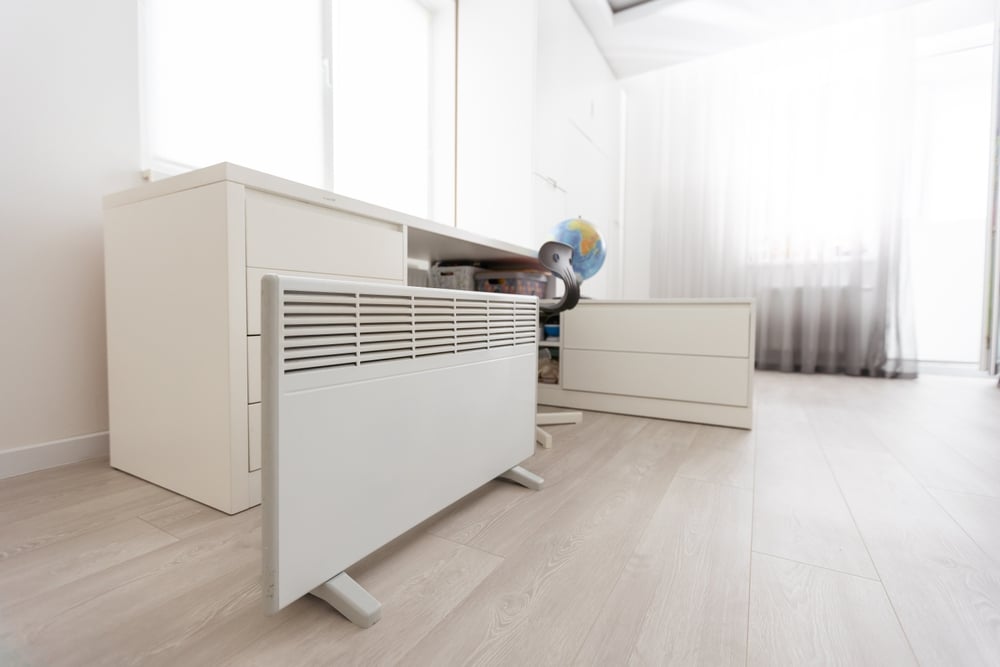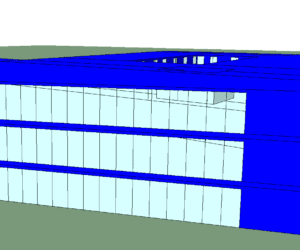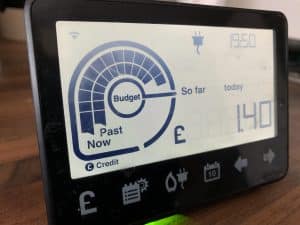Infrared Heating Panels are the one of the most eco-conscious choices you could make for your home, and we’re here to prove it!
Infrared heating is not a new concept: these clever panels have been used for a long time in Scandinavia and Germany, so why are we just catching up now? As with any innovation, it all came down to cost! Convection heaters (ie. radiators, what most homes currently use) are cheaper upfront, but far less efficient, so cost more in the long run. Whereas infrared heating panels are more expensive to buy, but far cheaper in the long run. And with the government’s net zero 2050 goals creeping closer and closer, the benefits are finally being prioritised over the initial costs. So, if you’re looking to get ahead of the curve, read on to find out whether they’re the right fit for your home.
What are infrared heating panels? Infrared heating panels work by heating up the objects or surfaces directly in front of them, as opposed to the air around them. This means infrared heat doesn’t get lost if there’s a cold wind: its durability makes it incredibly energy efficient.
There are so many benefits to infrared heating beyond its cost-saving powers. Scroll on down to find out why these clever panels might just change the way we heat our homes for good.
What is infrared lighting?
Infrared is electromagnetic radiation that sits just beyond the red end of the visible light range of the electromagnetic spectrum. It sits firmly between microwaves and UV rays. Now, don’t panic, that doesn’t mean infrared light is dangerous… Far from it! Our own bodies emit infrared radiation; which comes in pretty handy in search and rescue situations.
These infrared rays that are emitted by the sun travel directly to an object, heating whatever solid they hit, as opposed to heating the air. So, on a crisp Winter day when the wind is still, that’s why the sun still feels warm on your face – infrared rays! They’re clever little things, so obviously we needed to replicate the process for our own homes. And so infrared heating panels were created, and have been incredibly popular for decades outside of the UK. But they’re finally making waves here and we’re ready to sing their praises.
What are the benefits of infrared heating panels?
Infrared heating panels heat objects directly, unlike convection heaters that heat the air. This direct effect means that they’re a far more efficient way to warm up. With our standard convection heaters, all it takes is to accidentally leave a door ajar and all that precious hot air escapes. With infrared heating panels that’s not something you have to worry about. They really are a game changer.
They produce almost instant heat.
When you turn infrared heaters on you really do feel the heat immediately; there’s no waiting for the heat to ramp up. But, that same heat doesn’t then get too much (since the objects are warm, not the air).
They require little maintenance.
There’s tons of creative options for infrared heaters. The latest take are simple, minimalistic panels that sit on the wall and gently heat the whole room. They can even come as art pieces, or mirrors.
Infrared heating panels can reduce mould.
Because radiant warmth is easily absorbed by surrounding objects, including your walls, it lingers even after the heaters are turned off; not only great for efficiency, but the lasting warmth helps to tackle mould. By warming your walls, the infrared keeps them dry, preventing condensation from forming and stopping damp in its tracks.
They’re completely silent.
Aside from a little noise while turning on, infrared heaters are mostly silent. Perfect for bedrooms, or anywhere you don’t want an annoying background hum.
They reduce building heat loss.
Infrared heaters heat solid walls or objects in your home with radiant heat, this heat is retained in the object’s thermal mass, keeping your home warm and cosy.
You might also like: How to avoid thermal bridging.
Infrared heating panels are more energy efficient and can save you money.
Infrared heaters are typically the cheapest type of heater to run. They use less watts in general, and don’t need to work extra hard if a space is draughty.
You might also like: 10 helpful ways to reduce your autumn energy bills.
They’re gentle on allergies.
Unlike traditional heating, infrared heat doesn’t disturb the air, or more importantly any dust particles, making it a much better choice if you, or your family, have allergies.
What are the potential limitations of infrared heating panels?
While the benefits are plentiful, there are a few things to consider before installing infrared heating panels. This first being the coils of infrared heaters get extremely hot so they can be dangerous to use around children and pets. As they’re becoming more popular manufacturers are installing safety measures to counteract this, but it’s definitely an important consideration.
Another potential drawback is the limitation of zone warming; where infrared warms up the object directly in front of it, when you move around the room, or into a different one, that direct heating is lost.
The same way infrared panels heat the instant they turn on, they also stop radiating heat the second they turn off. And since the air in the room is not warmed, as it would be with a radiator, that space will lose heat very quickly.
Are infrared heating panels the right route for me?
With their many benefits, the fundamental draw of infrared heaters is that they use less energy, making them a more cost-effective and energy-efficient option, especially if you don’t need to heat an entire room for long periods of time!
If you’re looking for more information on whether infrared panels are right for you, just get in touch to book in a consultation. Our approach is completely bespoke to every client, looking at the building and project as a whole to decide on the best path for your needs.




















